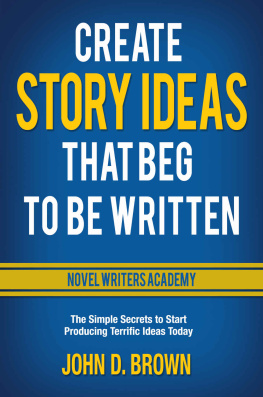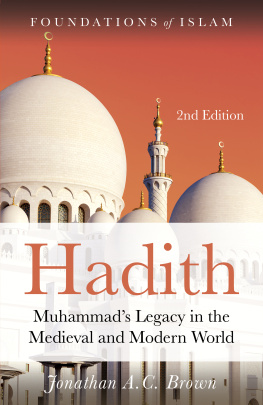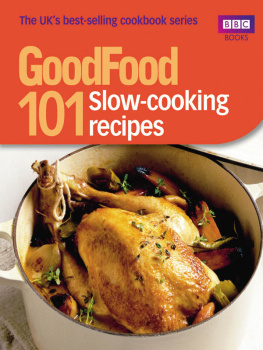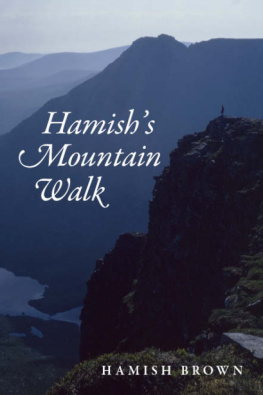An Herbalists Guide to
Growing & Using
Goldenseal
Kathleen Brown

CONTENTS
An Herb in Danger
Goldenseal (Hydrastis canadensis) has been used for centuries to treat digestive complaints, allergies, eye irritation, and dozens of other common conditions. Along with echinacea, ginseng, and ginkgo, its among the most versatile and potent of the medicinal herbs. Rosemary Gladstar, a well-known herbalist and founder of United Plant Savers, says goldenseal is quite possibly one of the most useful and valuable plants of North America.
And demand for goldenseal has never been higher so much so that the survival of this impressive plant is in serious jeopardy. Goldenseal is being harvested at a rate that exceeds its ability to grow back. Its becoming increasingly rare and expensive. As demand and prices rise, its often produced in adulterated forms, either by mixing the powder with other herbs or by grinding up the entire plant and selling it as root. In either case, the lower potency means people have to take more, and this in turn has led to even heavier harvesting. Unless alternatives are found, the demise of this precious herb may be close at hand.
Organizations Working for Preservation
Saving goldenseal has become a priority for United Plant Savers. On the largest scale, this requires protecting natural habitats. The clear-cutting of forests, for example, threatens many plant species, including goldenseal. More directly, the best option for protecting wild goldenseal is to increase cultivation.
As far back as the early 1900s, experts recognized that gold-enseal was being overharvested. The U.S. Department of Agriculture even published bulletins showing how to grow it. Fortunately, goldenseal is relatively easy to cultivate, and for commercial growers it provides a great return on investment: Theres been a 10-fold increase in prices in just the last decade, and the value will continue to rise.
Today, a number of large herbal-supply companies, such as Frontier Herb Coop, Eclectic, Gaia, Herb Pharm, and Herbs for Kids, are promoting the cultivation of goldenseal. Frontier Herb Coop has purchased a farm in southern Ohio to conduct research and offer educational programs on herbs, and especially endangered herbs, and does quite a bit of work with goldenseal. As more and more people begin growing their own goldenseal, pressures on the wild variety will diminish. With luck, this will eventually remove this healing plant from the at-risk list.
Before we discuss how to cultivate and prepare goldenseal, its worth taking a look back in time to see just how widely this herb has been used.
A History of Healing
Goldenseal has been called the poor mans ginseng because its similar in appearance to ginseng and grows in the same areas and habitats. Like ginseng, goldenseal is used to treat a wide range of conditions, from asthma and emotional stress to food sensitivities. Over the centuries its been popular both as medicine and as a dye, going by such names as eyebalm, eyeroot, yellow-eye, ground raspberry, Indian plant, jaundice root, orange- or yellow-root, turmeric root, and yellow Indian paint.
Medicinal Traditions in Early America
Goldenseal was first used by the Cherokees to relieve inflammation and stimulate appetite. They called it yellow puccoon and used the juice of the root to stain their faces and clothing. Iroquois tribes used it as a wash for various eye problems, as well as for whooping cough, liver disorders, fevers, and, when mixed with whiskey, for heart problems. The Micmac Indians used goldenseal for chapped lips, and other Native Americans mixed the powdered root with bear grease and used it as an insect repellent.

In the wild, goldenseal grows in rich, shady woods and damp meadows.
As early as 1650, Jesuit priests used bruised goldenseal leaves to disinfect cuts and wounds and help them heal. Following the example of Native Americans, pioneers in the 1700s chewed goldenseal to relieve mouth sores. They also used it for wounds, rashes, and irritated eyes.
The Stamp of Approval
Goldenseal started making the transition from native to mainstream medicine in 1798 when Benjamin Smith Barton wrote about its popularity among the Cherokee, who used it, among other things, for treating cancer.
Goldenseal was listed in the U.S. Pharmacopoeia from the mid-1800s until 1926. It was first listed in the National Formulary in 1888 and was included regularly from 1936 to 1955. Commercial tonics containing goldenseal were sold for stomach and menstrual problems. It was also used as a substitute for quinine and was thought to prevent pitting of the skin from smallpox.
Self-taught medicine man Samuel Thomson and his followers spread the word about goldenseal. The Thomsonians, who recommended goldenseal as a bitter for easing stomach upset, were responsible for giving goldenseal its common name. The bright yellow root has cup-shaped scars on the upper side. The scars resemble the wax seals once used to close envelopes, so they called the herb golden seal. Prior to this, the herb was mainly referred to as yellowroot.
Goldenseal was introduced in England in 1760, and it remains in use there today for treating heavy menstrual bleeding, indigestion, gastritis, and eye problems. However, it never became as popular in Europe as other native American herbs, such as echinacea. In fact, early American settlers tended to use goldenseal primarily as a bright yellow dye. When mixed with indigo, it produces an attractive green color. Goldenseal is still used in some watercolors and oil paints.
Goldenseal Now and in the Future
In the last few decades, however, goldenseal has steadily grown in popularity. In Europe, two of its active ingredients, berberine and hydrastine, are included in a number of commercial eyewashes. Although there has been little research on goldenseal there are fewer than 20 scientific papers analyzing its constituent parts it does have a long history of safe and effective use.
In the future, theres sure to be additional research validating what hundreds of years of popular use have confirmed: that gold-enseal is a very helpful addition to the herbal medicine chest not just for physical problems, but for emotional difficulties as well. Herbalist Michael Tierra, author of Spirit of Herbs Tarot, calls gold-enseal the Herb of Awakening. He suggests its pungent smell can affect peoples attitudes, helping them deal with astringent emotions like fear and bitter emotions like grief.
Growing Goldenseal
Goldenseal is a member of the Hydrastis genus in the Ranunculaceae, or Buttercup, family. It can be found growing in the wild in rich, shady woods and damp meadows. Its range extends from southern Canada down through Minnesota to Arkansas, across to Georgia, and back up to Quebec. Its a woodland perennial that does well in Zone 4 and possibly warmer parts of Zone 3.
Goldenseal grows to about 12 inches (30.4 cm) in height, with a spread of 6 to 12 inches (15.230.4 cm). The rootstock is yellow, from to inch (1.31.9 cm) thick, about 2 inches (5.1 cm) long, and covered with skinny fibrous rootlets. From the long, knotty root, or rhizome, sprouts a single, hairy stem. The stem has two to five light green, deeply toothed hairy leaves near the top. In late spring, a small, single flower emerges. The flower is short-lived, lasting only a week or so. The flower is replaced by a soft red berry resembling a raspberry, containing 10 to 30 black seeds.
Next page








